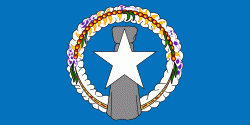Tagalog language
Tagalog (, ; ; Baybayin: ) is an Austronesian language spoken as a first language by the ethnic Tagalog people, who make up a quarter of the population of the Philippines, and as a second language by the majority. Its standardized form, officially named Filipino, is the national language of the Philippines, and is one of two official languages, alongside English.
Tagalog is closely related to other Philippine languages, such as the Bikol languages, the Bisayan languages, Ilocano, Kapampangan, and Pangasinan, and more distantly to other Austronesian languages, such as the Formosan languages of Taiwan, Indonesian, Malay, Hawaiian, Māori, Malagasy, and many more.
Tagalog is a Central Philippine language within the Austronesian language family. Being Malayo-Polynesian, it is related to other Austronesian languages, such as Malagasy, Javanese, Indonesian, Malay, Tetum (of Timor), and Yami (of Taiwan). It is closely related to the languages spoken in the Bicol Region and the Visayas islands, such as the Bikol group and the Visayan group, including Waray-Waray, Hiligaynon and Cebuano.
Tagalog differs from its Central Philippine counterparts with its treatment of the Proto-Philippine schwa vowel. In most Bikol and Visayan languages, this sound merged with and. In Tagalog, it has merged with. For example, Proto-Philippine (adhere, stick) is Tagalog dikít and Visayan & Bikol dukot.
Proto-Philippineand merged with but is between vowels. Proto-Philippine (name) and (kiss) became Tagalog ngalan and halík.
Proto-Philippine merged with. (water) and (blood) became Tagalog tubig and dugô.
Tagalog is closely related to other Philippine languages, such as the Bikol languages, the Bisayan languages, Ilocano, Kapampangan, and Pangasinan, and more distantly to other Austronesian languages, such as the Formosan languages of Taiwan, Indonesian, Malay, Hawaiian, Māori, Malagasy, and many more.
Tagalog is a Central Philippine language within the Austronesian language family. Being Malayo-Polynesian, it is related to other Austronesian languages, such as Malagasy, Javanese, Indonesian, Malay, Tetum (of Timor), and Yami (of Taiwan). It is closely related to the languages spoken in the Bicol Region and the Visayas islands, such as the Bikol group and the Visayan group, including Waray-Waray, Hiligaynon and Cebuano.
Tagalog differs from its Central Philippine counterparts with its treatment of the Proto-Philippine schwa vowel. In most Bikol and Visayan languages, this sound merged with and. In Tagalog, it has merged with. For example, Proto-Philippine (adhere, stick) is Tagalog dikít and Visayan & Bikol dukot.
Proto-Philippineand merged with but is between vowels. Proto-Philippine (name) and (kiss) became Tagalog ngalan and halík.
Proto-Philippine merged with. (water) and (blood) became Tagalog tubig and dugô.
Country
-
Philippines
The Philippines (Pilipinas), officially the Republic of the Philippines (Republika ng Pilipinas), is an archipelagic country in Southeast Asia. It is situated in the western Pacific Ocean and consists of around 7,641 islands that are broadly categorized under three main geographical divisions from north to south: Luzon, Visayas, and Mindanao. The Philippines is bounded by the South China Sea to the west, the Philippine Sea to the east, and the Celebes Sea to the southwest. It shares maritime borders with Taiwan to the north, Japan to the northeast, Palau to the east and southeast, Indonesia to the south, Malaysia to the southwest, Vietnam to the west, and China to the northwest. The Philippines covers an area of 300,000 km2 and,, it had a population of around 109 million people, making it the world's thirteenth-most-populous country. The Philippines has diverse ethnicities and cultures throughout its islands. Manila is the country's capital, while the largest city is Quezon City; both lie within the urban area of Metro Manila.
Negritos, some of the archipelago's earliest inhabitants, were followed by successive waves of Austronesian peoples. Adoption of animism, Hinduism and Islam established island-kingdoms called Kedatuan, Rajahnates, and Sultanates. The arrival of Ferdinand Magellan, a Portuguese explorer leading a fleet for Spain, marked the beginning of Spanish colonization. In 1543, Spanish explorer Ruy López de Villalobos named the archipelago Las Islas Filipinas in honor of Philip II of Spain. Spanish settlement through Mexico, beginning in 1565, led to the Philippines becoming ruled by the Spanish Empire for more than 300 years. During this time, Catholicism became the dominant religion, and Manila became the western hub of trans-Pacific trade. In 1896, the Philippine Revolution began, which then became entwined with the 1898 Spanish–American War. Spain ceded the territory to the United States, while Filipino revolutionaries declared the First Philippine Republic. The ensuing Philippine–American War ended with the United States establishing control over the territory, which they maintained until the Japanese invasion of the islands during World War II. Following liberation, the Philippines became independent in 1946. Since then, the unitary sovereign state has often had a tumultuous experience with democracy, which included the overthrow of a decades-long dictatorship by a nonviolent revolution. -
Northern Mariana Islands
The Northern Mariana Islands, officially the Commonwealth of the Northern Mariana Islands (CNMI; Sankattan Siha Na Islas Mariånas; Commonwealth Téél Falúw kka Efáng llól Marianas), is an unincorporated territory and commonwealth of the United States consisting of 14 islands in the northwestern Pacific Ocean. The CNMI includes the 14 northernmost islands in the Mariana Archipelago; the southernmost island, Guam, is a separate U.S. territory. The Northern Mariana Islands were listed by the United Nations as a non-self governing territory until 1990.
The United States Department of the Interior cites a landmass of 183.5 sqmi. According to the 2020 United States Census, 47,329 people were living in the CNMI at that time. The vast majority of the population resides on Saipan, Tinian, and Rota. The other islands of the Northern Marianas are sparsely inhabited; the most notable among these is Pagan, which for various reasons over the centuries has experienced major population flux, but formerly had residents numbering in the thousands.
